This week’s blog post comes from a participant from the workshop in December , Sarah Piettre, who is a graduate of the Université Paris IV – Sorbonne, and currently working at the Chanel archive.
While studying my MA, I wrote my dissertation on the iconography of embroidered motifs which adorned male waistcoats from the late 18th century in France. Through my researches I discovered the book of Joubert de l’Hiberderie which is initially intended for silk fabric designers. This book helped me to better understand how designers who specialised in fabric ornamentation could find inspiration and how they would use such motifs to convey messages. My research on the link between the embroidery designers and the silk fabric designers allowed me to take part of the V&A workshop commemorating the work of Joubert de l’Hiberderie.
Written for designers of silk, the book of Joubert de l’Hiberderie quickly became a reference for other artists such as designers for embroideries. Embroidery designs, such as woven silk motifs, incarnate the taste of the time, but they differ in their uses. Indeed, the embroidery design needs to be flexible as it must fit a particular shape of cloth.
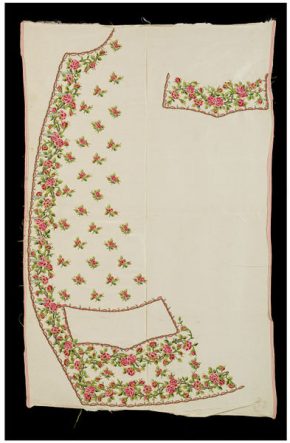
In his book Joubert de l’Hiberderie explains that ‘it is the happy choice of beautiful Nature that is creating a nice work’ adding ‘Let Nature then be your only study’ (p. 66). By suggesting to copy after nature, the author encourages designers to create their motifs in a more realistic way. Various species of flowers pictured on fabrics then became easier to identify. On an embroidery design, dated around 1770 – 1780, pansies, peonies, roses and forget-me-not can be recognised all around the pocket of a male’s waistcoat.

Likewise another embroidery design, probably made to adorn a woman’s dress, represents several blue carnations at different stages of blossom.
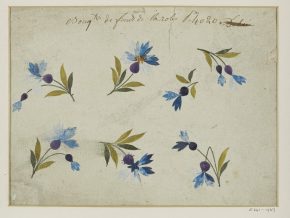
This second example stresses the importance of botanic studies as encouraged by Joubert de l’Hiberderie.
Version française:
Pendant mes études, j’ai rédigé mon mémoire de master sur l’iconographie des motifs brodés qui ornent les gilets d’homme à la fin du XVIIIe siècle en France. Au cours de mes recherches j’ai découvert le livre de Joubert de l’Hiberderie initialement conçu pour les dessinateurs d’étoffes de soie. Ce livre m’a permis de mieux comprendre comment les dessinateurs spécialisés dans l’ornementation d’étoffes pouvaient trouver l’inspiration et utiliser ces motifs pour diffuser des messages. Cette recherche sur le lien existant entre les dessinateurs de broderie et les dessinateurs d’étoffes m’a amenée à prendre part au workshop organisé par le V&A pour commémorer l’œuvre de Joubert de l’Hiberderie.
Destiné aux dessinateurs des Fabriques d’Étoffes, le livre de Joubert de l’Hiberderie est rapidement utilisé par d’autres artistes tels que les dessinateurs de carton de broderies. Les décors brodés, comme les motifs tissés, incarnent le goût d’une époque, mais ils se distinguent par leurs usages. En effet, le dessin de broderie doit pouvoir s’adapter aux formes imposées par le vêtement. S’adressant dans son livre aux jeunes artistes, Joubert de l’Hiberderie explique que « C’est l’heureux choix de la belle Nature qui a toujours fait la belle étoffe » en ajoutant « Que la Nature donc soit votre unique étude » (p. 66). En incitant ainsi à copier d’après nature, l’auteur invite les dessinateurs à faire évoluer les motifs vers plus de réalisme. Les différentes espèces de fleurs représentées sur les étoffes deviennent alors facilement identifiables. Sur un carton de broderie, datant de 1770 – 1780, on reconnaît des pensées, des pivoines, des roses et des myosotis peintes tout autour de la poche d’un gilet d’homme . De même, un autre carton de broderie, probablement conçu pour orner une robe, représente plusieurs œillets bleus à différents stades de fleuraison. Ce second exemple démontre l’importance des études botaniques telles qu’elles ont été encouragées par Joubert de l’Hiberderie.
Reference: Joubert de Hiberderie, Le Dessinateur, pour les fabriques d’ettoffes d’or, d’argent et de soie, Paris 1765.
As before, we’re very much looking forward to the upcoming conference at the Courtauld Institute on 5th March. The programme is now up, and features many interesting papers. For more information, including booking details, please see: http://courtauld.ac.uk/event/fabrications-designing-for-silk-in-the-eighteenth-century
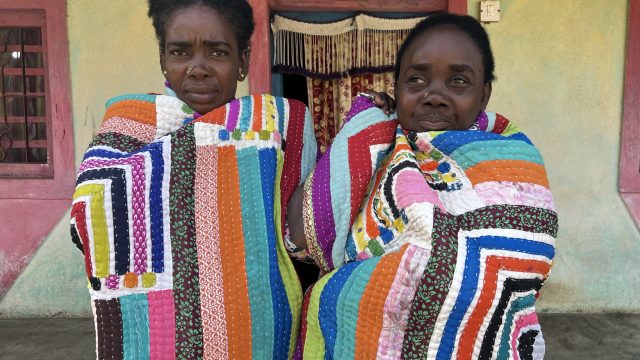
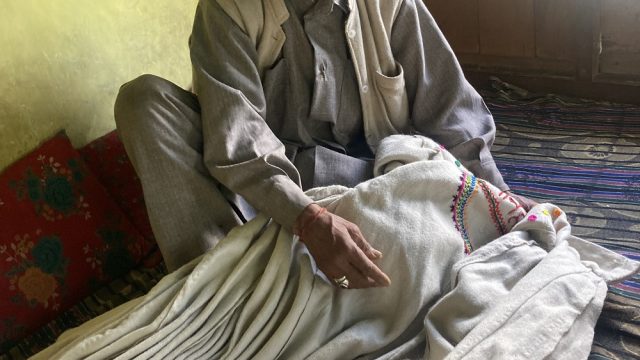
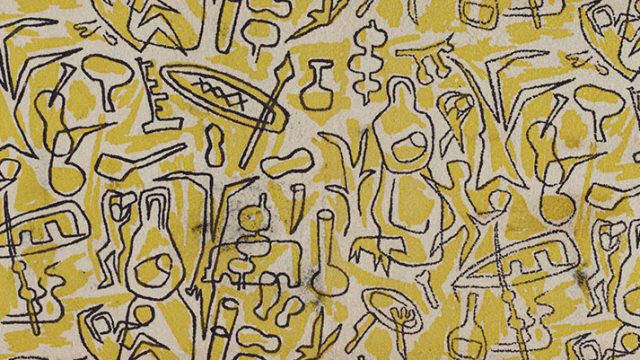
Thanks for your sharing! More experience for me.
Thank you for your comment, Marsha. I’m very pleased that you enjoyed the blog post. We’ll continue to post more entries relating to the project over the coming months, that I hope you will find interesting.
Obviously a very loose interpretation of ‘study after nature’ given that carnations are not blue. The only way that there can be blue carnations is through genetic engineering, which clearly is not remotely on the agenda at the time this book was published.
My mother insisted that I clean her machine after every project. Now, more that 20 years later I still have that habit and I’m passing this routine on to my daughte.Thank for your sharing, by the way can i “guest post” at your site!
Hello,
I would really appreciate the opportunity to provide a guest post that would bring value to you and your audience. If you’re interested I’d be happy to provide a few topics I had in mind.
Thanks,
Susan
This looks great, thanks for this very informative post.
Merci beaucoup pour cet article. Thank you for sharing this as I was searching for a embroidery design and found this. Glad that Kirsty share both French and English version here. I spent sometime to read both version.
-sam
All flowers look beautiful, I am glad that embroidery is coming back into fashion.